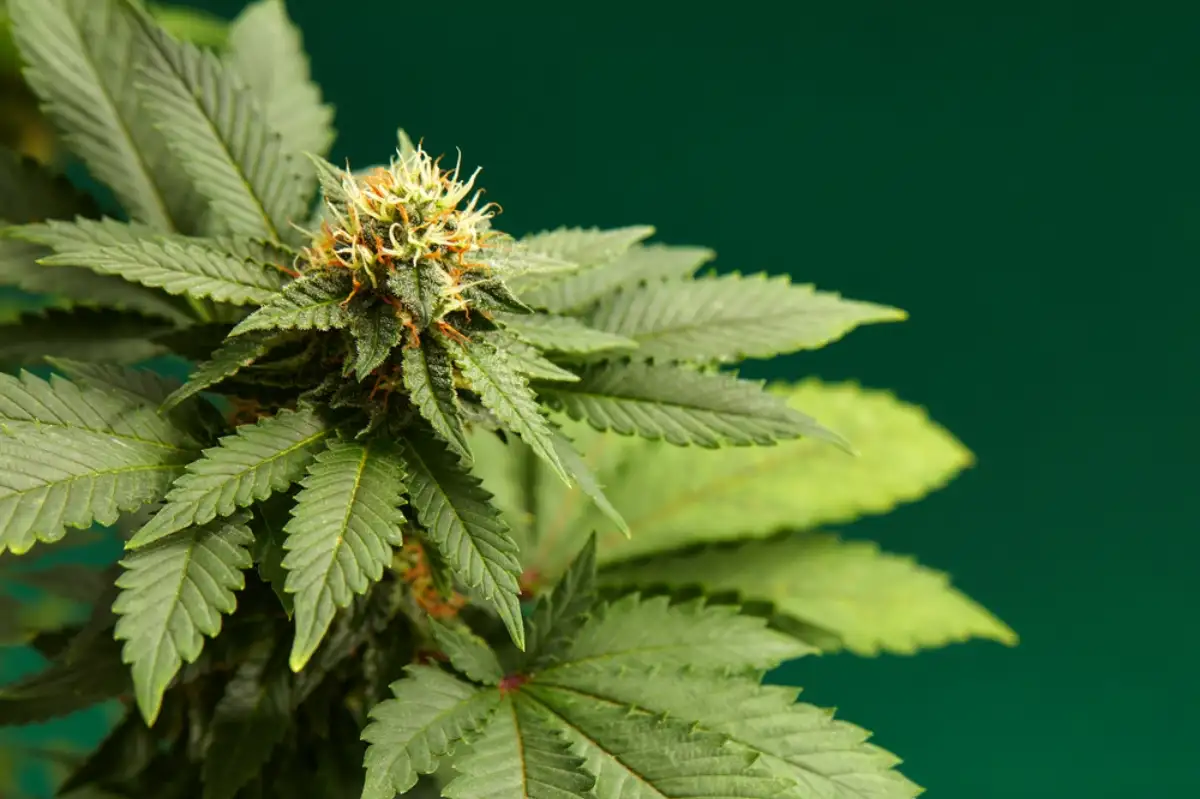Back pain can be a debilitating condition that affects millions of people worldwide. From chronic discomfort to limited mobility, finding effective relief is a top priority for those suffering from this condition. While traditional treatment options such as medications and physical therapy provide some relief, many individuals are turning to alternative therapies, including cannabis, to manage their back pain.
In recent years, cannabis has gained significant attention for its potential medicinal properties, especially in the realm of pain management. With its natural compounds called cannabinoids, cannabis has shown promise in alleviating various types of pain, including back pain. In this blog post, we will explore the best cannabis strains for back pain and how they can provide relief.
Before diving into specific strains, it’s important to understand the basics of cannabis and its role in chronic pain. We will explore the mechanism of action of cannabinoids and how they interact with the body’s endocannabinoid system to reduce pain signals.
Once we have a solid foundation, we will delve into the benefits of cannabis for back pain. From reducing inflammation to relaxing muscles, cannabis offers a range of potential benefits that can effectively target the underlying causes of back pain.
To provide credibility to these claims, we will explore scientific evidence supporting the use of cannabis for back pain. From studies and clinical trials to anecdotal evidence, we will compile a comprehensive overview of the research surrounding this topic.
Choosing the right cannabis strains for back pain is crucial for achieving optimal results. We will discuss the differences between indica, sativa, and hybrid strains and how each type can impact pain relief. Additionally, we will highlight the top cannabis strains recommended specifically for back pain, taking into consideration their potency and effectiveness.
Using cannabis for back pain requires understanding the various methods of consumption available. From smoking to edibles and topicals, we will explore the pros and cons of each method and how it affects the onset and duration of pain relief. Determining the right dosage is also essential to maximize the benefits while minimizing potential side effects, and we will provide guidance on finding the optimal dose for individual needs.
Of course, safety and legal considerations are crucial when using cannabis for back pain. We will address the legal status of cannabis in different regions and provide safety precautions that should be followed to ensure a safe and positive experience. Consulting with healthcare providers will also be highlighted as an essential step in incorporating cannabis into a back pain management plan.
In this blog post, we aim to provide a comprehensive guide to help individuals suffering from back pain navigate the world of cannabis. By understanding the basics, exploring the best strains, and learning how to use cannabis safely and effectively, readers will be equipped with the knowledge to make informed decisions about incorporating cannabis into their back pain management routine.
Understanding the Basics: Cannabis and Chronic Pain
Chronic pain is a complex condition that can have a significant impact on a person’s quality of life. It is often characterized by persistent pain that lasts for months or even years. Back pain, in particular, can be a challenging form of chronic pain to manage. This is where cannabis comes into play.
Cannabis, also known as marijuana or weed, is a plant that contains various chemical compounds called cannabinoids. These cannabinoids interact with specific receptors in our body’s endocannabinoid system, which plays a crucial role in regulating pain, mood, appetite, and other essential functions.
The two most well-known cannabinoids found in cannabis are delta-9-tetrahydrocannabinol (THC) and cannabidiol (CBD). THC is responsible for the psychoactive effects often associated with cannabis, while CBD is non-intoxicating and has gained attention for its potential therapeutic properties.
When it comes to chronic pain, cannabis has shown promise in providing relief. Research suggests that cannabinoids can help modulate pain perception by interacting with various receptors in the body. This interaction can lead to a reduction in pain signals and inflammation, providing much-needed relief for individuals suffering from chronic back pain.
In addition to their pain-relieving properties, cannabinoids in cannabis can also help address some of the underlying causes of back pain. For example, they may have muscle relaxant effects, which can help alleviate tension and spasms that contribute to discomfort. Furthermore, cannabinoids have shown anti-inflammatory properties, which can reduce inflammation in the back and surrounding tissues.
It is important to note that while cannabis may be effective for some individuals, it may not work for everyone. The effectiveness of cannabis for back pain can vary depending on factors such as the individual’s physiology, the specific cause of their back pain, and the strains and dosage used. It is crucial to consult with healthcare professionals and explore other treatment options before considering cannabis as part of a pain management plan.
In the next sections, we will dive deeper into the specific ways in which cannabis can help alleviate back pain. We will explore the mechanism of action of cannabinoids, the benefits of cannabis for back pain, and the scientific evidence supporting its use. By understanding the basics of cannabis and chronic pain, we can better appreciate how this natural plant may offer relief for those suffering from back pain.
How Cannabis Can Help Alleviate Back Pain
Back pain can be a persistent and debilitating condition, impacting daily activities and overall quality of life. While traditional treatment options such as pain medications and physical therapy can provide some relief, they may not always be sufficient. This is where cannabis can play a role in alleviating back pain.
Mechanism of Action: The Role of Cannabinoids
Cannabis contains over 100 different cannabinoids, but THC and CBD are the most well-known and studied. These cannabinoids interact with receptors in the endocannabinoid system, which is involved in regulating pain, inflammation, and other bodily functions.
When consumed, cannabinoids in cannabis bind to cannabinoid receptors in the body, primarily CB1 and CB2 receptors. CB1 receptors are mainly found in the brain and central nervous system, while CB2 receptors are predominantly located in the immune system and peripheral tissues.
By interacting with these receptors, cannabinoids can modulate the perception of pain and reduce inflammation. They can also influence the release of neurotransmitters involved in pain signaling, such as serotonin and dopamine. This modulation of pain signals can lead to a decrease in pain intensity and an overall improvement in comfort.
Benefits of Cannabis for Back Pain
The use of cannabis for back pain can offer several potential benefits:
- Pain Relief: Cannabis has analgesic properties that can help reduce the intensity of back pain. It can target both nociceptive pain (caused by tissue damage) and neuropathic pain (caused by nerve damage or dysfunction).
- Anti-inflammatory Effects: Inflammation is often a contributing factor to back pain. Cannabinoids in cannabis have been shown to have anti-inflammatory properties, which can help alleviate inflammation in the back and surrounding tissues.
- Muscle Relaxation: Back pain can be exacerbated by muscle tension and spasms. Certain strains of cannabis, particularly those high in CBD, have muscle relaxant properties that can help ease muscle tightness and promote relaxation.
- Sleep Improvement: Chronic back pain often disrupts sleep patterns, leading to fatigue and further exacerbation of pain. Cannabis can help improve sleep quality and duration, allowing for better rest and potential pain relief.
- Mood Enhancement: Dealing with chronic pain can take a toll on mental health. Cannabis, particularly strains high in CBD, has been reported to have mood-enhancing and anxiolytic (anxiety-reducing) effects, which can positively impact overall well-being.
Scientific Evidence Supporting Cannabis Use for Back Pain
While anecdotal evidence and personal experiences have shown promising results, scientific research on the effects of cannabis for back pain is still emerging. However, several studies have provided insights into the potential benefits of cannabis.
For instance, a study published in the Journal of Pain found that vaporized cannabis significantly reduced pain intensity in participants with chronic neuropathic pain. Another review published in the Journal of Psychoactive Drugs concluded that cannabis can be an effective adjunct treatment for chronic pain, including back pain.
Furthermore, a study published in the European Journal of Pain demonstrated that a combination of THC and CBD provided superior pain relief compared to placebo in individuals with chronic pain conditions, including back pain.
While more research is needed to fully understand the mechanisms and effectiveness of cannabis for back pain, these studies provide initial evidence of its potential as a therapeutic option.
In the next sections, we will delve deeper into the specific cannabis strains recommended for back pain and explore different methods of consumption to maximize the benefits of cannabis for pain relief.
Choosing the Right Cannabis Strains for Back Pain
Choosing the right cannabis strains for back pain is essential to ensure optimal pain relief and overall well-being. Cannabis strains can vary in their composition of cannabinoids and terpenes, which contribute to their unique effects and therapeutic properties. Understanding the differences between indica, sativa, and hybrid strains can help individuals select the most suitable option for their specific needs.
Understanding Indica, Sativa, and Hybrid Strains
- Indica Strains: Indica strains are known for their relaxing and sedating effects. They typically have higher levels of CBD, which provides pain relief and promotes relaxation. Indica strains are often recommended for individuals experiencing muscle tension, spasms, and insomnia associated with back pain. They can help induce a sense of physical calmness and tranquility.
- Sativa Strains: Sativa strains are known for their energizing and uplifting effects. These strains typically have higher levels of THC, which can provide euphoria and mental stimulation. Sativa strains are often recommended for individuals who want to manage their back pain while remaining functional and engaged in daily activities. They can help boost mood, creativity, and focus.
- Hybrid Strains: Hybrid strains are a combination of both indica and sativa strains. They offer a balance between the relaxing and uplifting effects, making them suitable for individuals seeking a more balanced pain relief experience. Hybrid strains can vary in their THC to CBD ratio, so it’s important to consider the specific cannabinoid content when selecting a hybrid strain for back pain.
Top Cannabis Strains Recommended for Back Pain
- Granddaddy Purple (Indica): Known for its potent analgesic and relaxing properties, Granddaddy Purple is often recommended for individuals with chronic back pain. It can provide deep relaxation, alleviate muscle tension, and induce a restful sleep, making it an excellent choice for nighttime pain relief.
- Blue Dream (Hybrid): Blue Dream is a popular hybrid strain that combines the pain-relieving effects of indica strains with the uplifting qualities of sativa strains. It can offer a balanced experience, providing pain relief while maintaining mental clarity and focus.
- Harlequin (Sativa/High CBD): Harlequin is a sativa-dominant strain known for its high CBD content. It offers a gentle, non-intoxicating pain relief experience while promoting relaxation and reducing inflammation. Harlequin is often chosen for individuals who want to manage their pain without feeling overly sedated.
- ACDC (Hybrid/High CBD): ACDC is a hybrid strain with a high CBD to THC ratio, making it suitable for those seeking pain relief without the psychoactive effects. It provides calming and anti-inflammatory effects, making it a popular choice for individuals with chronic back pain.
How to Choose the Right Strain for You
Selecting the right strain for your back pain requires considering your specific symptoms, preferences, and desired effects. Factors to consider include:
- THC to CBD Ratio: Determine whether you prefer a strain with higher THC or CBD content, depending on your tolerance and desired level of psychoactivity.
- Terpene Profile: Pay attention to the terpenes present in each strain, as they contribute to the strain’s aroma and potential therapeutic effects. For example, strains high in myrcene may have more relaxing properties, while strains high in limonene may offer uplifting effects.
- Personal Sensitivity: Experiment with different strains to gauge your individual response. Start with lower THC levels and gradually increase as needed, while monitoring how each strain affects your pain and overall well-being.
It’s important to note that everyone’s experience with cannabis strains can vary, and what works for one person may not work for another. Consulting with knowledgeable budtenders at dispensaries or healthcare professionals experienced in cannabis medicine can provide valuable guidance in selecting the right strains for your specific back pain needs.
How to Use Cannabis for Back Pain
Using cannabis for back pain requires understanding the various methods of consumption, determining the right dosage, and being aware of potential side effects. By following proper guidelines, individuals can maximize the benefits of cannabis while minimizing any adverse effects.
Methods of Consumption
- Inhalation: Inhalation is one of the most common methods of consuming cannabis. It involves smoking dried cannabis flowers or using vaporizers to heat the plant material without combustion. Inhalation provides rapid onset of effects, making it ideal for immediate pain relief. However, it may not be suitable for individuals with respiratory issues.
- Oral Ingestion: Consuming cannabis orally involves ingesting edibles, capsules, oils, or tinctures. Oral ingestion provides longer-lasting effects but has a slower onset compared to inhalation. It is important to note that the effects of oral ingestion can be more potent and last longer, so it is crucial to start with a low dose and wait for the effects to fully manifest before consuming more.
- Topical Application: Topical cannabis products, such as creams, lotions, and balms, are applied directly to the skin in the affected area. While topicals may not provide systemic relief, they can target localized pain and inflammation associated with back pain. They are particularly useful for individuals who prefer not to experience psychoactive effects.
- Sublingual Administration: Sublingual administration involves placing cannabis tinctures or oils under the tongue for absorption through the sublingual glands. This method allows for faster absorption into the bloodstream, providing relatively quick effects. It is a discreet and convenient option for individuals who prefer not to inhale or ingest cannabis.
Determining the Right Dosage
Finding the right dosage of cannabis for back pain is essential to achieve optimal pain relief without experiencing unwanted side effects. Dosage can vary significantly depending on factors such as individual tolerance, body weight, metabolism, and the specific strain and product used. It is recommended to start with a low dose and gradually increase as needed, while closely monitoring the effects.
Consulting with healthcare professionals or knowledgeable budtenders can provide valuable guidance on dosage recommendations based on individual needs and circumstances. Keeping a journal to track the dosage, strain, and effects can also help fine-tune the optimal dosage over time.
Potential Side Effects and How to Manage Them
While cannabis can provide pain relief, it is important to be aware of potential side effects and how to manage them effectively. Common side effects include dry mouth, dry eyes, dizziness, increased heart rate, and changes in appetite. These effects are generally mild and temporary but can be more pronounced with higher doses or certain strains.
To manage potential side effects:
- Stay Hydrated: Drink plenty of water to combat dry mouth and stay hydrated.
- Use Eye Drops: Over-the-counter eye drops can alleviate dry and irritated eyes.
- Start with Low THC: For individuals sensitive to psychoactive effects, starting with strains high in CBD or low in THC can minimize the risk of feeling overly intoxicated.
- Avoid Driving or Operating Machinery: Cannabis can impair judgment and coordination, so it is important to refrain from driving or engaging in activities that require alertness until the effects have worn off.
- Seek Medical Assistance: If any severe or concerning side effects occur, it is advisable to seek medical assistance promptly.
By understanding the different methods of consumption, determining the right dosage, and being aware of potential side effects, individuals can use cannabis for back pain in a safe and effective manner. It is crucial to approach cannabis use responsibly and consult with healthcare professionals when necessary.
Legal and Safety Considerations when Using Cannabis for Back Pain
Using cannabis for back pain requires careful consideration of the legal and safety aspects involved. It is important to understand the legal status of cannabis in your region, follow safety precautions, and consult with healthcare providers to ensure a responsible and safe experience.
Understanding the Legal Status of Cannabis
The legal status of cannabis varies from country to country and even within different states or regions. While some jurisdictions have legalized cannabis for both medical and recreational use, others may have strict regulations or prohibit its use entirely. It is crucial to familiarize yourself with the laws and regulations governing cannabis in your specific location to avoid any legal consequences.
Research the legal framework surrounding cannabis, including possession limits, cultivation regulations, and purchasing requirements. Stay updated on any changes or updates to the laws to ensure compliance and avoid legal issues.
Safety Precautions when Using Cannabis for Back Pain
- Source Quality Products: Purchase cannabis products from licensed dispensaries or reputable sources to ensure quality and safety. This helps minimize the risk of consuming contaminated or adulterated products.
- Start Low and Go Slow: Begin with a low dosage and gradually increase as needed. This approach allows you to gauge your tolerance and minimize the risk of adverse effects.
- Avoid Mixing with Other Substances: Cannabis may interact with certain medications or substances, such as alcohol or opioids. It is important to avoid mixing cannabis with other substances without consulting with healthcare professionals.
- Store Securely and Safely: Keep cannabis products out of reach of children and pets. Store them in a secure and cool place to maintain their potency and prevent accidental consumption.
- Be Mindful of Potential Interactions: If you are taking medications or have underlying health conditions, consult with healthcare providers to ensure that cannabis use will not interfere with your current treatment plan or exacerbate any existing conditions.
Consulting with Healthcare Providers
Before incorporating cannabis into your back pain management plan, it is essential to consult with healthcare providers knowledgeable about cannabis medicine. They can provide guidance on strain selection, dosage recommendations, potential drug interactions, and help monitor your overall health and well-being.
Be open and honest with your healthcare provider about your cannabis use, including the specific strains and methods of consumption you are considering. This allows them to provide tailored advice and ensure that cannabis use aligns with your overall treatment goals.
Remember that healthcare providers can provide valuable insights, but they may have varying opinions or levels of familiarity with cannabis. Seek out professionals who specialize in cannabis medicine or are open to discussing its use as part of a comprehensive pain management approach.
By understanding the legal status of cannabis, following safety precautions, and consulting with healthcare providers, individuals can use cannabis for back pain in a responsible and safe manner. It is important to prioritize your well-being and adhere to the guidelines and regulations in your specific area.




